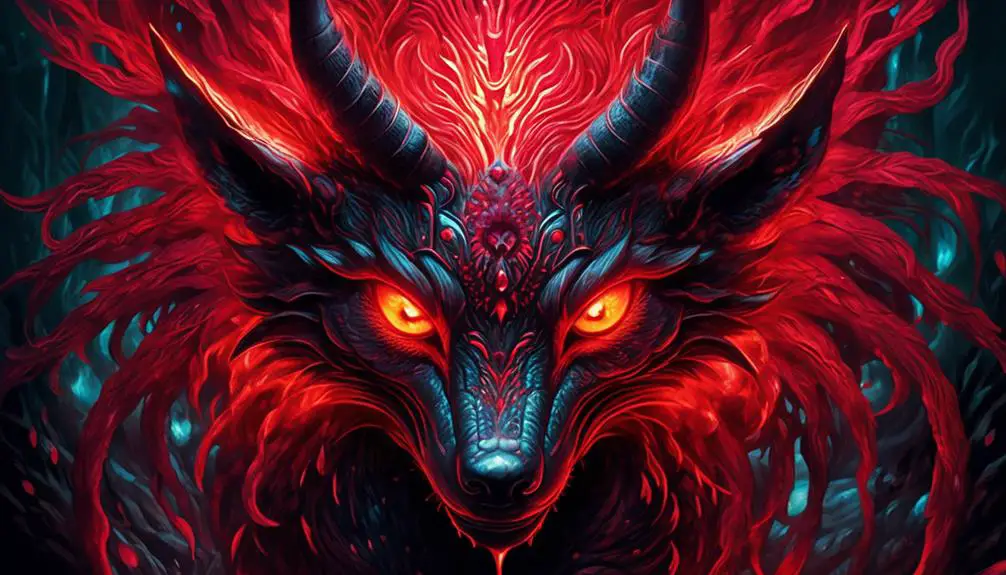Have you ever gazed into the eyes of an animal with fiery red eyes, mesmerized by their enigmatic allure? These crimson orbs, found in a diverse range of species, hold a captivating mystery that begs to be unraveled.
From reptiles and birds to insects and mammals, animals with red eyes seem to possess an undeniable charm that sets them apart. But what lies behind this striking feature? Is it a mere aesthetic quality or does it serve a deeper purpose?
Join us on a journey of discovery as we uncover the secrets hidden within the gaze of animals with red eyes.
Reptiles With Red Eyes
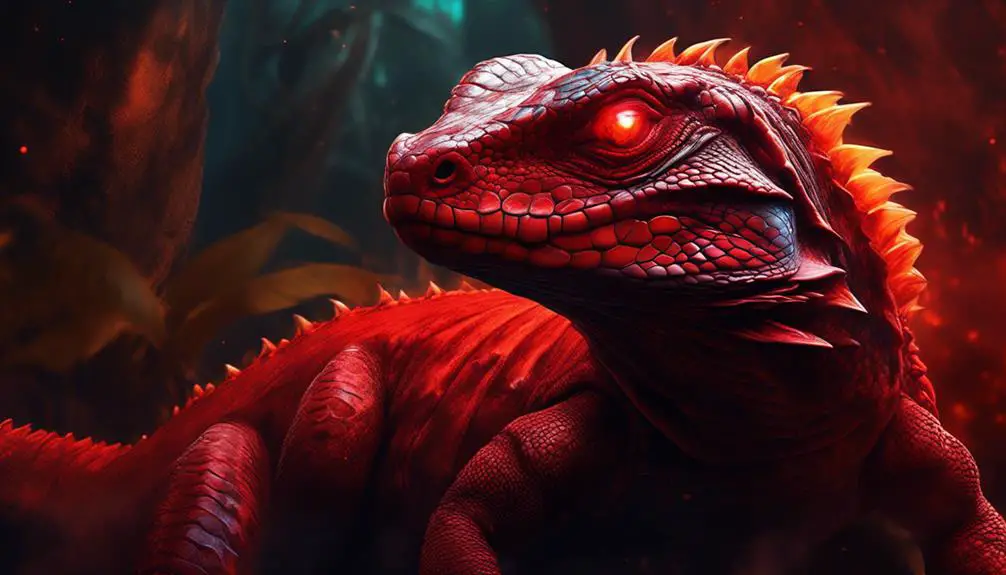
Reptiles with red eyes exhibit a fascinating and distinct characteristic that sets them apart from other species in the animal kingdom. One example of a reptile with red eyes is the box turtle. Male box turtles have bright red eyes, while females have brown eyes. This difference in eye color is believed to be related to sexual dimorphism, where the physical characteristics of males and females differ.
Another reptile species with red eyes is the red-eyed crocodile skink. This skink has a tough, crocodile-like exterior and striking red eyes. The red eyes of the European adder serve as a warning to predators. These snakes have distinct red eyes that help to deter potential threats.
The red eyes of these reptiles may be attributed to the presence of certain pigments or the reflection of light in a unique way. Further research is needed to fully understand the evolutionary significance and physiological basis of red eye coloration in reptiles.
Birds With Red Eyes
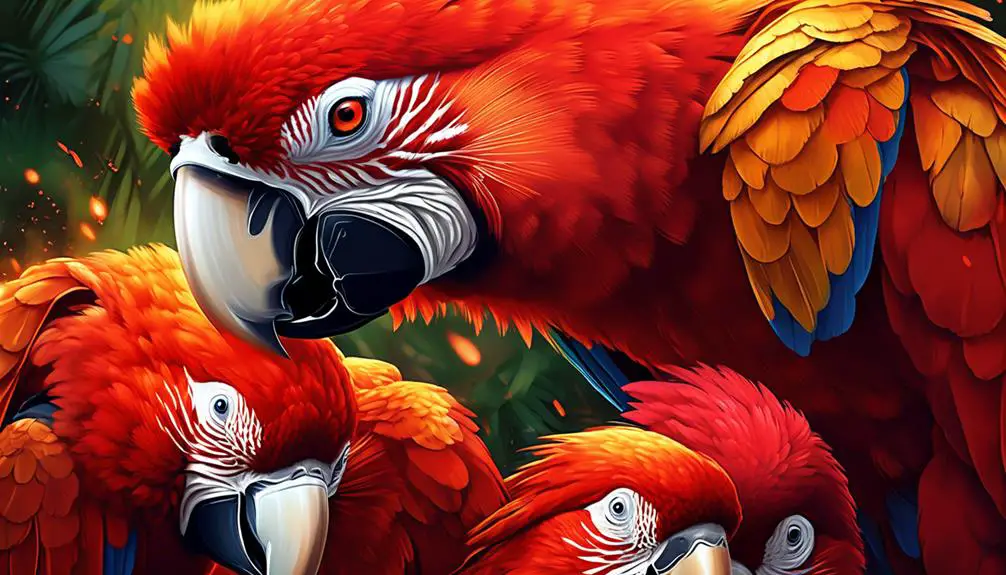
Now let’s turn our attention to the captivating world of birds with red eyes. Among these birds is the Rosy-Billed Pochard, a migratory duck known for its stunning appearance, with red eyes and rosy bills. Another bird with red eyes is the Red-Eyed Vireo, a small songbird with deep red irises and an impressive singing ability. Male wood ducks also have bright red eyes, adding to their colorful plumage.
The presence of red eyes in birds is thought to serve various purposes. In some cases, red eyes may play a role in attracting mates, as they’re often associated with bright and vibrant colors. Red eyes may also enhance visual communication, allowing birds to better convey signals to one another. Additionally, red eyes can serve as a form of intimidation or warning to potential predators, signaling that the bird isn’t to be messed with.
Insects With Red Eyes
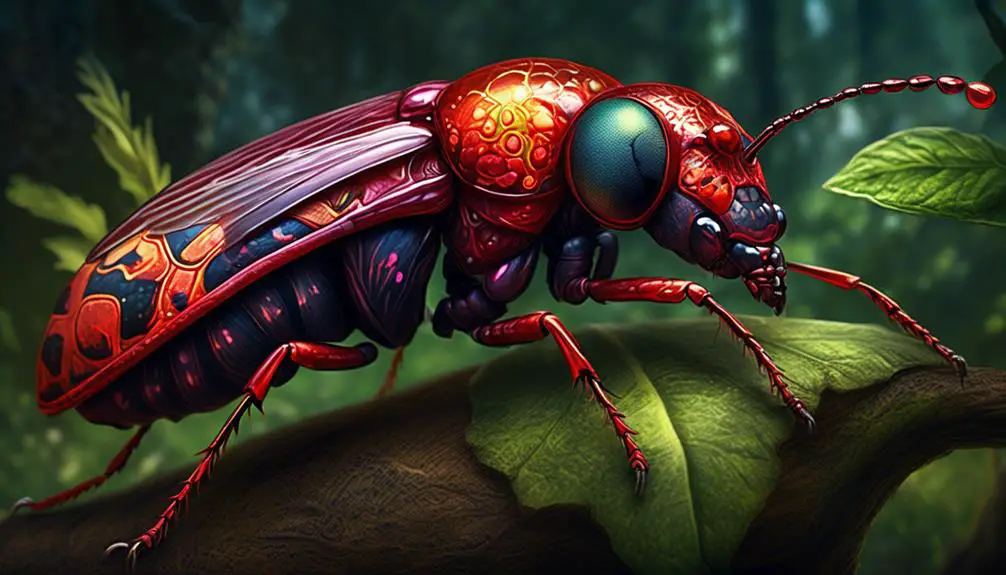
Insects with red eyes exhibit a striking and unique feature that sets them apart from other arthropods in the animal kingdom. One example of an insect with red eyes is the giant redeye butterfly. This species of butterfly is known for its vibrant red eyes, which add to its overall unique appearance. The red eyes of the giant redeye butterfly serve multiple purposes. They can help attract potential mates through their bright coloration, and they may also serve as a warning to predators, indicating that the butterfly is toxic or unpalatable.
Another insect with red eyes is the flesh fly. These insects are commonly found in warm, tropical climates and have distinctive red eyes. The red eyes of the flesh fly are a result of pigments called ommochromes, which are responsible for the red coloration. While the exact function of the red eyes in flesh flies isn’t fully understood, it’s believed that they may play a role in mate recognition or communication.
Lastly, the redeye tetra is another insect with red eyes. These tetras have striking silvery fins and unique half-black, half-transparent tails. The red eyes of the redeye tetra add to its overall visual appeal and may also serve as a form of camouflage, allowing the insect to blend in with its surroundings.
Animals With Red Eyes in South America

Now let’s explore the fascinating world of animals with red eyes in South America.
One example is the Rosy-Billed Pochard, a migratory duck native to South America, known for its stunning appearance with red eyes and rosy bills.
Another captivating species is the Red-Eyed Tree Frog, found in both South and Central America, with vibrant red eyes that serve as a striking feature.
Additionally, South America is home to various insects with red eyes, such as the common Flesh Fly, which can be found in warm, tropical climates throughout the region.
South American Red-Eyed Ducks
South America is home to several species of red-eyed ducks, including the migratory Rosy-Billed Pochard. These ducks are known for their stunning appearance, with vibrant red eyes and rosy bills. They can be found in various countries throughout South America, including Argentina, Chile, and Uruguay.
| Species Name | Scientific Name |
|---|---|
| Rosy-Billed Pochard | Netta peposaca |
| Yellow-Billed Pochard | Netta erythrophthalma |
| White-Faced Whistling Duck | Dendrocygna viduata |
The Rosy-Billed Pochard (Netta peposaca) is a medium-sized duck with a distinctive red eye. The males have a black head and neck, while the females have a lighter brown coloration. They are known for their strong migratory behavior, traveling long distances to breed and find suitable feeding grounds.
The Yellow-Billed Pochard (Netta erythrophthalma) is another species of red-eyed duck found in South America. As the name suggests, these ducks have a yellow bill and striking red eyes. They can be found in freshwater habitats, such as lakes and wetlands, throughout the continent.
Lastly, the White-Faced Whistling Duck (Dendrocygna viduata) is a unique species with a white face and, you guessed it, red eyes. These ducks are known for their distinctive whistling calls and are commonly found in marshes and swamps.
Vibrant Red-Eyed Frogs
The vibrant red-eyed frogs found in South America are known for their striking appearance and unique eye coloration. These frogs, scientifically known as Agalychnis callidryas, are commonly referred to as red-eyed tree frogs. They’re native to the tropical rainforests of Central America and parts of South America.
The bright red color of their eyes is a result of pigments in their irises, which help them camouflage and blend in with their surroundings. The red eyes serve as a warning to potential predators, indicating that they’re toxic and shouldn’t be approached.
In addition to their eye color, these frogs have vivid green bodies with blue and yellow markings, making them one of the most visually stunning amphibians in the world. Their vibrant appearance and unique eye coloration make them fascinating creatures to observe in their natural habitat.
Common South American Insects
As we explore the fascinating world of South American insects, it’s important to shift our focus from the vibrant red-eyed frogs to the common insects found in this diverse region.
South America is home to a wide variety of insects, many of which possess red eyes. One such insect is the Giant Redeye Butterfly. This species of butterfly is known for its distinctive red eyes and unique appearance.
Another common insect in South America with red eyes is the Flesh Fly. These insects, found in warm, tropical climates, have distinct red eyes that make them easily recognizable.
Lastly, we’ve the Redeye Tetra, a fish species found in South America. These tetras have striking silvery fins and half-black, half-transparent tails, complemented by their captivating red eyes.
These common South American insects with red eyes contribute to the rich biodiversity of the region.
Miscellaneous Animals With Red Eyes
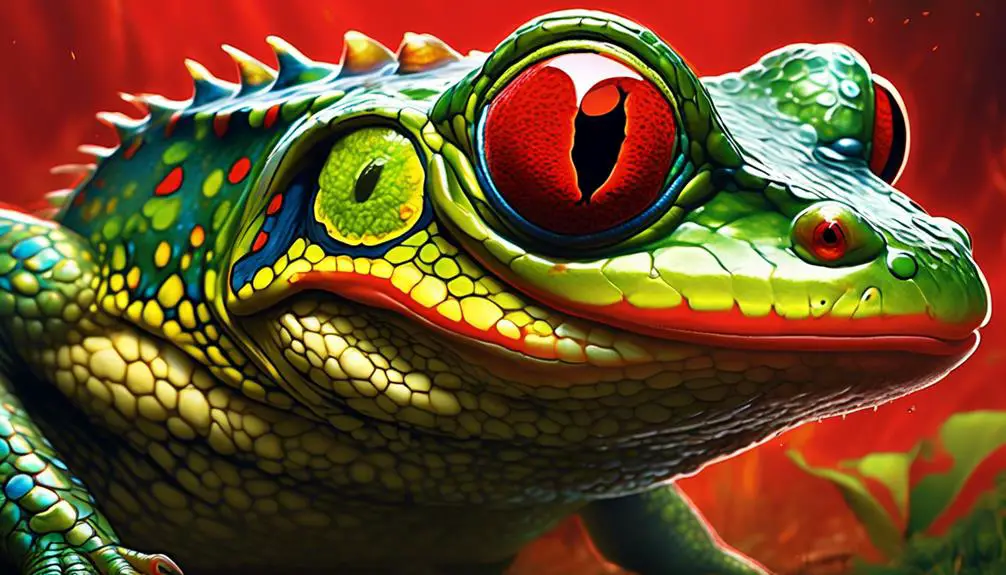
Now let’s turn our attention to some fascinating creatures that fall into the category of miscellaneous animals with red eyes.
These animals possess unique eye colors, colorful plumage, and impressive camouflaging abilities.
For example, the red-eyed vireo, a small songbird, boasts deep red irises and an extraordinary singing ability.
Additionally, the male wood duck stands out with its bright red eyes and vibrant plumage.
Lastly, the satanic leaf-tailed gecko, native to Madagascar, captivates with its striking red eyes and incredible camouflaging skills.
Unique Eye Colors
With their striking red eyes, various animals exhibit unique eye colors that captivate and intrigue observers. From reptiles to birds to insects, these animals showcase a diverse range of eye colors that add to their overall allure. Here are some examples of animals with unique eye colors:
| Animal | Eye Color |
|---|---|
| Albino Alligator | Pink |
| White Bengal Tiger | Blue |
| Pink Dolphin | Pink |
| Axolotl | Black |
| Siamese Fighting Fish | Blue |
The albino alligator, for instance, has pink eyes that stand out against its white scales. The white Bengal tiger possesses mesmerizing blue eyes that add an air of mystery to its already majestic presence. In the aquatic world, the pink dolphin boasts eyes that match its delicate pink hue. On the other hand, the axolotl, a unique amphibian, has black eyes that contrast against its pale skin. Lastly, the Siamese fighting fish displays vibrant blue eyes that perfectly complement its colorful fins. These animals with their distinct eye colors truly showcase the beauty and diversity of the animal kingdom.
Colorful Plumage
The captivating animals with red eyes discussed previously also showcase colorful plumage that further enhances their visual appeal.
Among these fascinating creatures is the Satanic Leaf-Tailed Gecko found on the African island of Madagascar. This gecko not only possesses striking red eyes but also boasts incredible camouflaging abilities. Its colorful plumage, which includes shades of brown, green, and gray, allows it to blend seamlessly with its leafy surroundings.
Another notable species is the wood duck, where the males display bright red eyes along with a stunning array of colorful feathers. Their plumage consists of various shades of green, purple, and white, making them a true spectacle to behold.
These animals with red eyes and vibrant plumage serve as a testament to the diverse and captivating beauty found in the animal kingdom.
Camouflaging Abilities
The Satanic Leaf-Tailed Gecko, with its striking red eyes and remarkable camouflaging abilities, demonstrates the astonishing capability of blending seamlessly with its leafy surroundings.
This unique gecko, found on the African island of Madagascar, has evolved to have a body shape and coloration that closely resembles a dead leaf. Its reddish-brown skin is covered in irregular patterns that mimic the veins and textures of a decaying leaf, allowing it to disappear into the foliage.
The gecko’s eyes, with their vibrant red coloration, further enhance its camouflage by blending in with the reddish hues of the forest floor. This extraordinary adaptation not only helps the gecko avoid detection by potential predators but also enables it to surprise unsuspecting prey.
The Satanic Leaf-Tailed Gecko’s red eyes aren’t just a striking feature; they’re a key component of its survival strategy in its leafy environment.
Box Turtle: Male Vs Female Eyes
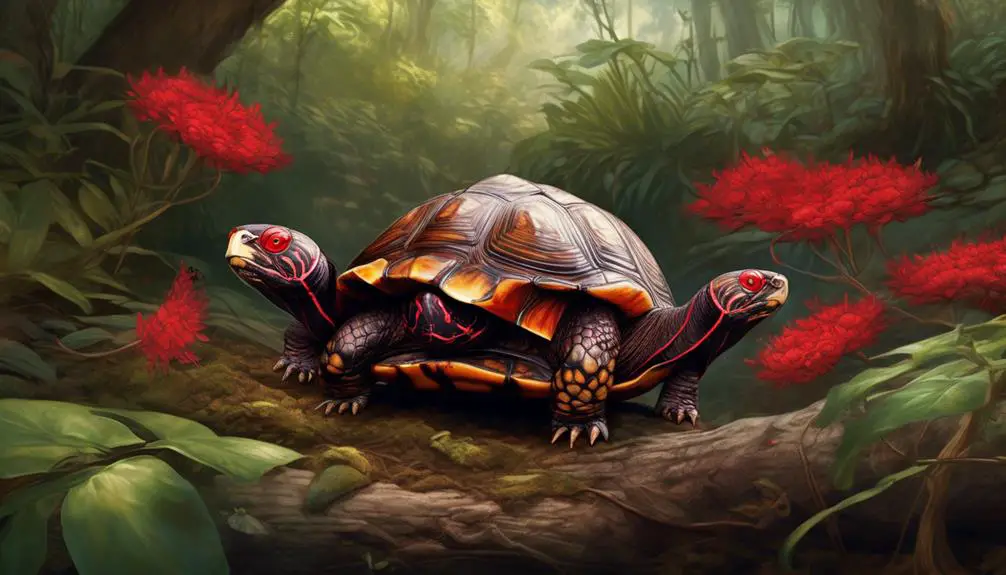
Male box turtles possess vivid red eyes, distinguishing them from their female counterparts who have brown eyes. The coloration of their eyes is not only aesthetically pleasing but also serves a purpose in their survival and mating strategies. The red eyes of male box turtles are a result of pigmentation and blood vessels present in their ocular tissues. This vibrant hue is believed to play a role in attracting potential mates and asserting dominance within their territories.
To further illustrate the difference between male and female box turtle eyes, let’s compare their characteristics in a table:
| Male Box Turtles | Female Box Turtles |
|---|---|
| Vivid red eyes | Brown eyes |
| Pigmentation and blood vessels present | Lack of pigmentation and fewer blood vessels |
The contrasting colors of their eyes make it easy to distinguish between the sexes, allowing researchers and enthusiasts to identify and study their behavior more accurately. Additionally, the red eyes of male box turtles add to their overall allure and charm, making them a fascinating species to observe in the wild. As with many other animals with red eyes, the vibrant coloration of the male box turtle’s eyes serves as a visual cue, contributing to their reproductive success and overall survival.
Red-Eyed Crocodile Skink: Unique Appearance

The Red-Eyed Crocodile Skink, scientifically known as Tribolonotus gracilis, is a fascinating reptile that stands out due to its unique appearance. This skink has a tough, crocodile-like exterior and striking red eyes, which add to its distinctive charm.
They’re native to the rainforests of New Guinea and thrive in the humid and tropical environment.
Physical Characteristics
With its tough, crocodile-like exterior and vibrant red eyes, the Red-Eyed Crocodile Skink certainly stands out among reptiles. This unique skink species has several physical characteristics that contribute to its striking appearance. The Red-Eyed Crocodile Skink has a compact body, typically measuring around 6 to 10 inches in length. Its skin is covered in small, rough scales that resemble the texture of a crocodile’s skin. These scales are usually brown or gray in color, providing excellent camouflage in their natural habitat. However, it is the bright red eyes of this skink that truly captivate observers. The red coloration is due to pigments in the iris, which give the eyes a mesmerizing and almost otherworldly appearance. These red eyes, combined with the skink’s unique body shape and scaly skin, make it a remarkable creature to behold.
| Physical Characteristics | Description |
|---|---|
| Body Length | 6 to 10 inches |
| Skin Texture | Rough scales resembling a crocodile’s skin |
| Skin Color | Brown or gray for camouflage |
| Eye Color | Vibrant red due to pigments in the iris |
Natural Habitat
Nestled within the tropical rainforests of Southeast Asia, the natural habitat of the Red-Eyed Crocodile Skink showcases the unique appearance of this captivating reptile species. These skinks are found in countries such as Indonesia, Papua New Guinea, and the Solomon Islands.
They prefer to dwell in the leaf litter and among the fallen logs and rocks of the forest floor. The dense vegetation provides them with ample cover and protection. With their remarkable red eyes, they’re able to see clearly in the dimly lit undergrowth.
The warm and humid climate of the rainforest allows these skinks to thrive, as they require high humidity levels to keep their skin healthy. They’re primarily nocturnal, spending their days hidden away and emerging at night to hunt for insects and other small invertebrates.
The natural habitat of the Red-Eyed Crocodile Skink is truly a fascinating and essential environment for this remarkable species.
European Adder: Distinct Warning Eyes
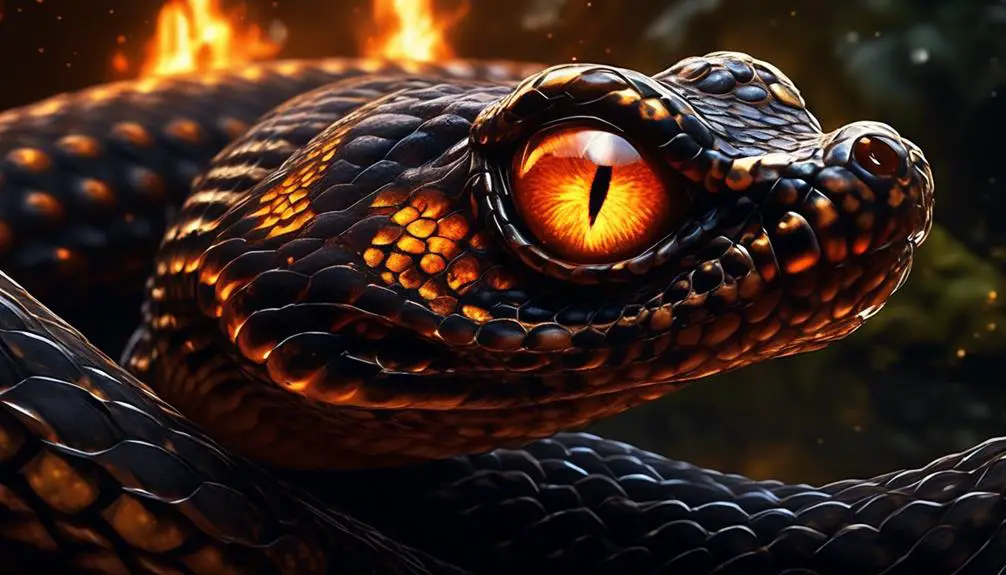
Distinctly warning predators of its presence, the European Adder showcases its bright red eyes as a striking defensive mechanism. These venomous snakes, also known as Vipera berus, are found in a variety of habitats across Europe, including grasslands, woodlands, and heathlands. With their distinctive red eyes, they serve as a visual warning to potential threats, effectively deterring them from approaching.
The red coloration of the European Adder’s eyes is a result of blood vessels that are close to the surface of the eye. This gives them a vivid appearance that contrasts with the snake’s dark, patterned scales. When threatened, the adder will raise its head and flare its neck, exposing its red eyes in a bold display. This warning coloration serves to startle and intimidate predators, making them think twice before attacking.
The bright red eyes of the European Adder aren’t only a visual deterrent but also play a role in communication. When two males come into conflict during the mating season, they engage in a ritualized combat known as ‘the dance of the adders.’ During this display, the males will face each other, raising their heads and exposing their red eyes in an attempt to establish dominance.
Rosy-Billed Pochard: Stunning Duck Appearance

The stunning appearance of the Rosy-Billed Pochard, a migratory duck species, captivates with its rosy bills and mesmerizing red eyes, continuing our exploration of animals with striking eye colors. Native to South America, these ducks are known for their vibrant plumage and unique features. The rosy-billed pochard stands out not only for its red eyes but also for its striking overall appearance.
| Rosy-Billed Pochard | |
|---|---|
| Appearance | Striking |
| Eye Color | Red |
| Bill Color | Rosy |
| Plumage | Vibrant |
| Habitat | Wetlands |
| Diet | Aquatic plants |
The rosy-billed pochard’s red eyes add to its allure. The bright red coloration of their eyes is a result of pigments in the iris. The purpose of these red eyes is still not completely understood, but it is believed that they may play a role in attracting mates or identifying individuals within a group.
With their vibrant plumage, the rosy-billed pochards stand out in their habitat. The males have a distinctive pinkish-red bill, while the females have a slightly darker bill. Both males and females have a dark brown body with white undertail coverts.
Found in wetlands, these ducks primarily feed on aquatic plants, diving underwater to forage for food. They are highly adapted to their aquatic lifestyle, with webbed feet that help them swim efficiently.
Giant Redeye Butterfly: Unique Insect Species
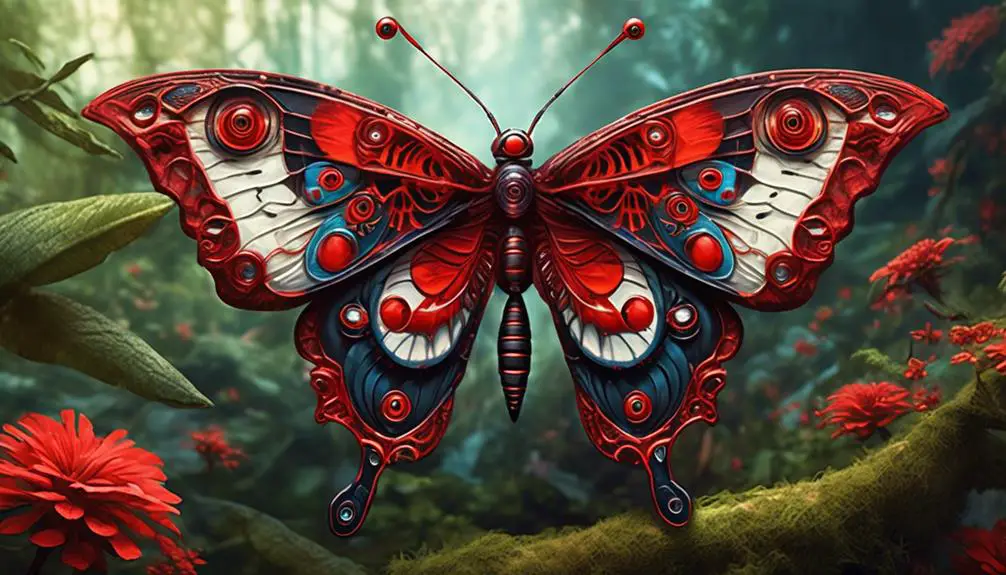
The Giant Redeye Butterfly, with its striking red eyes and unique appearance, is a captivating and distinctive species of insect. Scientifically known as the Adelpha iphiclus, this butterfly is found primarily in the forests of South and Central America. Its wingspan can range from 2.5 to 3.5 inches, and it’s easily recognizable by its vibrant colors and intricate patterns. The upper side of its wings is predominantly black, with striking orange and yellow bands that create a mesmerizing contrast. However, it’s the large, round red eyes that truly set this butterfly apart from others in its family.
The red eyes of the Giant Redeye Butterfly serve multiple purposes. Firstly, they play a crucial role in communication, as they’re used to attract potential mates during courtship. The bright red coloration is believed to be a signal of fitness and genetic quality, making it highly attractive to potential partners.
In addition, these eyes also serve as a form of defense against predators. When threatened, the butterfly can flash its red eyes, startling and potentially deterring attackers. This defensive mechanism is commonly referred to as ‘flash coloration,’ and it’s an effective strategy employed by many insects to deter predators.

Erzsebet Frey (Eli Frey) is an ecologist and online entrepreneur with a Master of Science in Ecology from the University of Belgrade. Originally from Serbia, she has lived in Sri Lanka since 2017. Eli has worked internationally in countries like Oman, Brazil, Germany, and Sri Lanka. In 2018, she expanded into SEO and blogging, completing courses from UC Davis and Edinburgh. Eli has founded multiple websites focused on biology, ecology, environmental science, sustainable and simple living, and outdoor activities. She enjoys creating nature and simple living videos on YouTube and participates in speleology, diving, and hiking.

